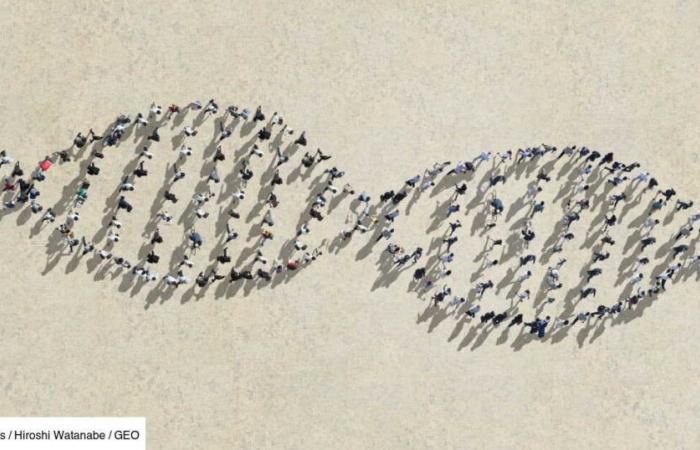A growing number of studies highlight the tangible genetic legacy left by Neanderthals (Homo neanderthalensis) in the genome of modern humans (A wise man). But it is becoming increasingly evident that the past of our species was also marked by frequent encounters with another close – and yet less known – relative, Denisova Man (Homo denisovensis). This is evidenced by the results of the latest research, compiled by population geneticists from Trinity College Dublin (Ireland) and shared in a review article, published in Nature Genetics on November 5, 2024.
A trace through human populations
Compared to the knowledge accumulated in recent decades thanks to the multiplication of studies of Neanderthal remains, burials and artifacts, information on the Denisovans is both more recent and clearly more limited. For good reason, only a few teeth and bones belonging to the extinct species have been found. Genetic analyzes carried out in 2010 on a finger, exhumed in the Denisova cave (Altai mountains, Siberia), however, revealed that it had become genetically distinct from Neanderthals around 400,000 years ago – or probably a few hundred thousands of years after Neanderthals became distinct from our own species.
Our understanding of the mysterious Denisovan is slowly built over years and research. And these now suggest that its genetic heritage extends from Siberia to South-East Asia, via Oceania and even going… to the Americas.
Indeed, “By exploiting the segments of Denisovans that remain in modern human genomes, scientists have discovered evidence of three past events in which genes from different populations of Denisovans became integrated into the genetic signatures of modern humans”introduced in a press release Dr Linda Ongaro, postdoctoral researcher at the School of Genetics and Microbiology at Trinity College Dublin.
Several genes thus come from the Denisovans: genetic sequences common in Tibetan populations, which help the body adapt to relatively low levels of oxygen; others which strengthen the immunity of the Papuans; still others which influence fats to better withstand the cold in Inuit lineages…
Hybridizations with an underestimated impact?
A genetic heritage that adds to that left by Neanderthals, whose genes helped some of us get through pandemics, influenced our appearance and even shaped our brains; approximately 1 to 2% of the genome of people of European, Asian and Native American descent is thought to come from Neanderthals. The genetic heritage left by Denisova Man, on the other hand, is more concentrated in specific populations of East Asia and Oceania, where it may have played an important adaptive role, therefore. Particularly, among indigenous peoples of Papua New Guinea, the Solomon Islands and Australian Aborigines, where it can represent between 3 to 6% of the genome.
“It is a common misconception that humans evolved suddenly and cleanly from a common ancestorexplains Dr. Linda Ongaro. But the more we learn, the more we understand that hybridization with different species ofhominines took place and helped shape the people we are today”.
If this synthesis highlights the advances made by researchers, it also highlights the extent of the uncertainties that remain regarding the impact of interactions between distinct pockets of modern humanity with the extinct. The specialist concludes:
There are many avenues for future research that will help us tell a more complete story of the impact of Denisovans on modern-day humans, including more detailed genetic analyzes in understudied populations, which could reveal currently hidden traces of Denisovan ancestry.






